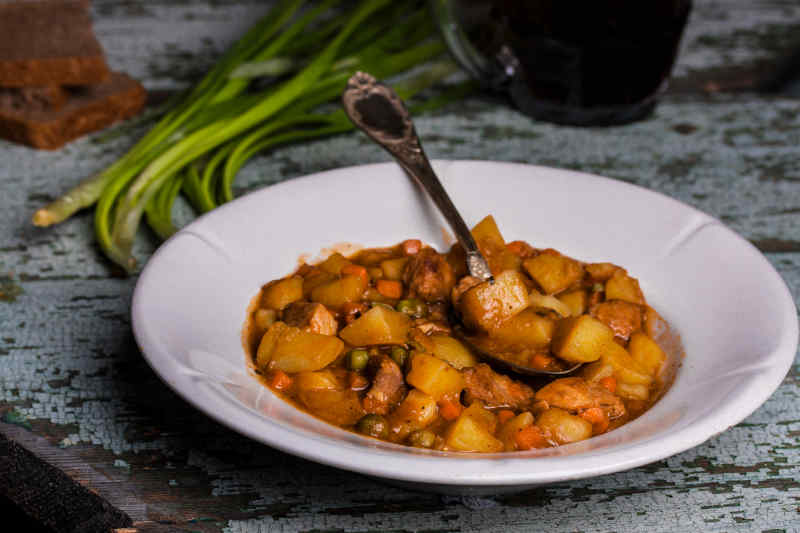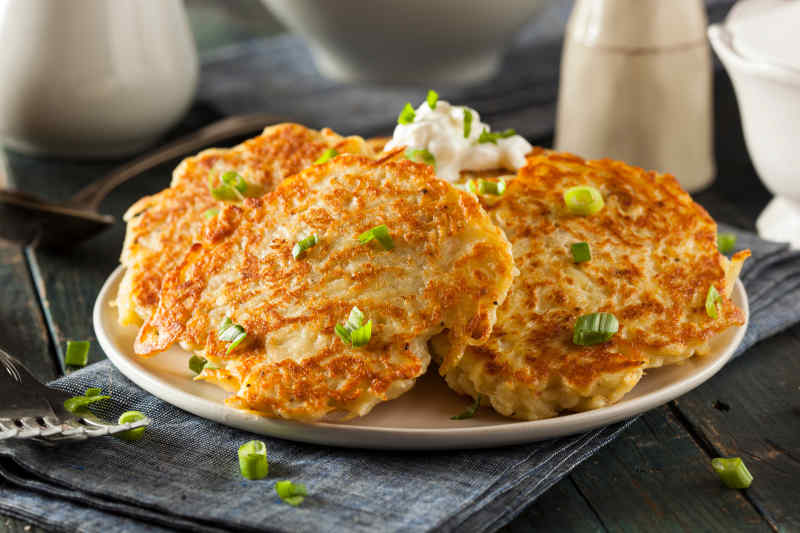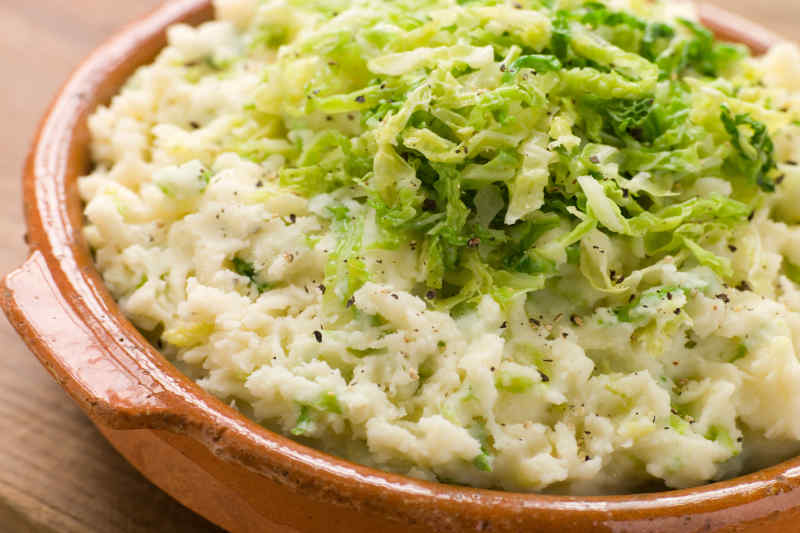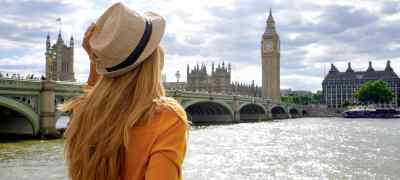Ah, Dublin. The capital of Ireland, you only need to spend seconds there to appreciate the green landscapes and rolling rivers.
Grabbing a pint might be the first thing on your list, and Dublin has quickly become a hub of culture and food. Whether you’re searching to snag a quick bite or are ready to gorge on a meal of luxury, Dublin has the food to indulge your senses.
Irish Stew
Fade Street Social
4 Fade St, Dublin 2, D02 NF77 | Fade Street Social website
Boasting a tapas bar and cocktail/winter garden, Fade Street Social serves up fantastic dishes. The restaurant serves farm-fresh and homegrown ingredients to bring tastes of Dublin from the garden to the plate.
Stew is a classic dish of the Irish because it's a one-pot dish with few ingredients that could quickly feed Ireland’s large families. Fade Street Social pays homage to Irish history with their classic Irish stew. It's made with spiced cream, garnished with drops of potato mousse and crispy balsamic fillet, scented with lovage and celery leaves and served with creamy mashed potatoes.
Bacon and Cabbage
The Stag's Head
1 Dame Ct D02 TW84 | The Stags Head website
The Stag’s Head is a traditional Irish pub featuring cheap, authentic eats. Around since 1770, it doesn’t get much more old Irish-culture infused than this. A favorite haunt of foodies, The Stag’s Head is known for its traditional bacon and cabbage dish. Bacon and cabbage is served with a fresh parsley herb sauce and mashed potatoes.
In the past, beef was a food for the rich, but pork was much more affordable. So, the Irish people would brine pork and preserve it with salt, making bacon and then pairing it with a readily available vegetable: cabbage.
Boxty
Gallagher's Boxty House
20-21 Temple Bar Dublin 2 | The Stags Head website
Food lovers give Gallagher’s rave reviews for its traditional dish boxty, in its essence a potato pancake. Gallagher’s is renowned for its Leitrim Pan Boxty, which is a light Boxty pancake served with a variety of fillings. The Gaelic Boxty contains medallions of beef filet topped with whiskey and black pepper, served in a mushroom cream sauce and all wrapped up in the infamous boxty potato pancake.
Boxty has a rich history in Dublin. Because potatoes can grow in any type of soil, it was easy for the Irish to grow their own potatoes under any conditions. The name “boxty” comes from the Irish phrase “arán bocht tí”, meaning “poor-house bread”.
Coddle
The Hairy Lemon
Stephen Street Lower Dublin 2 | The Hairy Lemon website
The Hairy Lemon prides itself on being an unconventional 19th-century tavern featuring traditional Irish dishes. Coddle is one of its most popular eats: their “Famous Dublin Coddle” attracts both tourists and locals alike.
Bacon, sausage, root vegetables, potatoes, and herbs soak in a savory broth with a side of mashed potatoes and brown bread.
Coddle dates back to the 1700s, when the dish gained popularity. That's because an Irish wife could go to bed and leave it simmering on the stove so that it would be ready when her husband returned from the pub. Coddle was an easy dish especially on Thursdays, when people could cook up leftover bacon and sausage before the traditional Irish-Catholic meatless Fridays.
Colcannon
Oliver St. John Gogarty
18-21 Anglesea St, Temple Bar, Dublin 2, D02 RX38 | Oliver St. John Gogarty website
Oliver St. John Gogarty’s serves up traditional Irish fare, including the popular dish colcannon. Not only does Gogarty’s serve colcannon, but they also serve it as a side for every single dish! Colcannon is mashed potatoes with kale and cabbage mixed in, served warm. Although it can be served alone, Gogarty’s prefers to pair it with Irish dishes like poached seafood and Gaelic steak.
Almost everything is sautéed, poached, or fried in good ole’ Irish whiskey, seasoned with fresh herbs and offered with a side of fresh vegetables. In the 1600 and 1700s Ireland, potatoes, cabbages, and leaks were cheap foods for common people, so a dish was developed that combined all the ingredients. The word colcannon is from the Gaelic term “cal ceannann” which means white-headed cabbage.
Black and White Pudding
Kingfisher Dublin
166 Parnell Street, Rotunda, Dublin 1 | Kingfisher Dublin website
Visitors to Dublin must try Black and White Pudding! This Irish dish contains pork fat, meat, and blood mixed with barley, suet, and oatmeal all cased in sausage. White pudding is the same dish minus the blood (thus lacking the dark coloring that black pudding has trademarked).
Kingfisher is one of the last remaining strictly family-run businesses in Dublin. They serve up Kelly’s Black and White Pudding as a part of one of their biggest breakfast meals: “The Full Irish.” The Full Irish boasts two pork sausages, bacon, eggs any style, grilled mushrooms, baked beans, rosemary diced potatoes, and of course, Black and White Pudding. Black and white pudding dates back to ancient times, when it was mentioned in Homer’s Odyssey of 1000 BC. It was also a recipe in Apicius, the only classical “cookbook” to survive from the Roman Empire.
Irish Brown Bread
Bread Nation
41 Pearse Street Dublin, D02 H308 | Bread Nation website
Irish Brown Bread is similar to soda bread made with white flour. In Ireland, Irish brown bread is served with almost every meal. It is tradition to serve Irish brown bread topped with Irish butter made from grass-fed cow’s milk. Irish Brown Bread is cooked with a cross shape in the top of the bread. The cross was superstitiously believed to release the devil from the bread before any Irish person would eat it.
One of the top bakeries for Irish Brown Bread in Dublin is Bread Nation. Bread Nation uses local, seasonal, and organic products, and gets flour delivered from a local stone mill.














